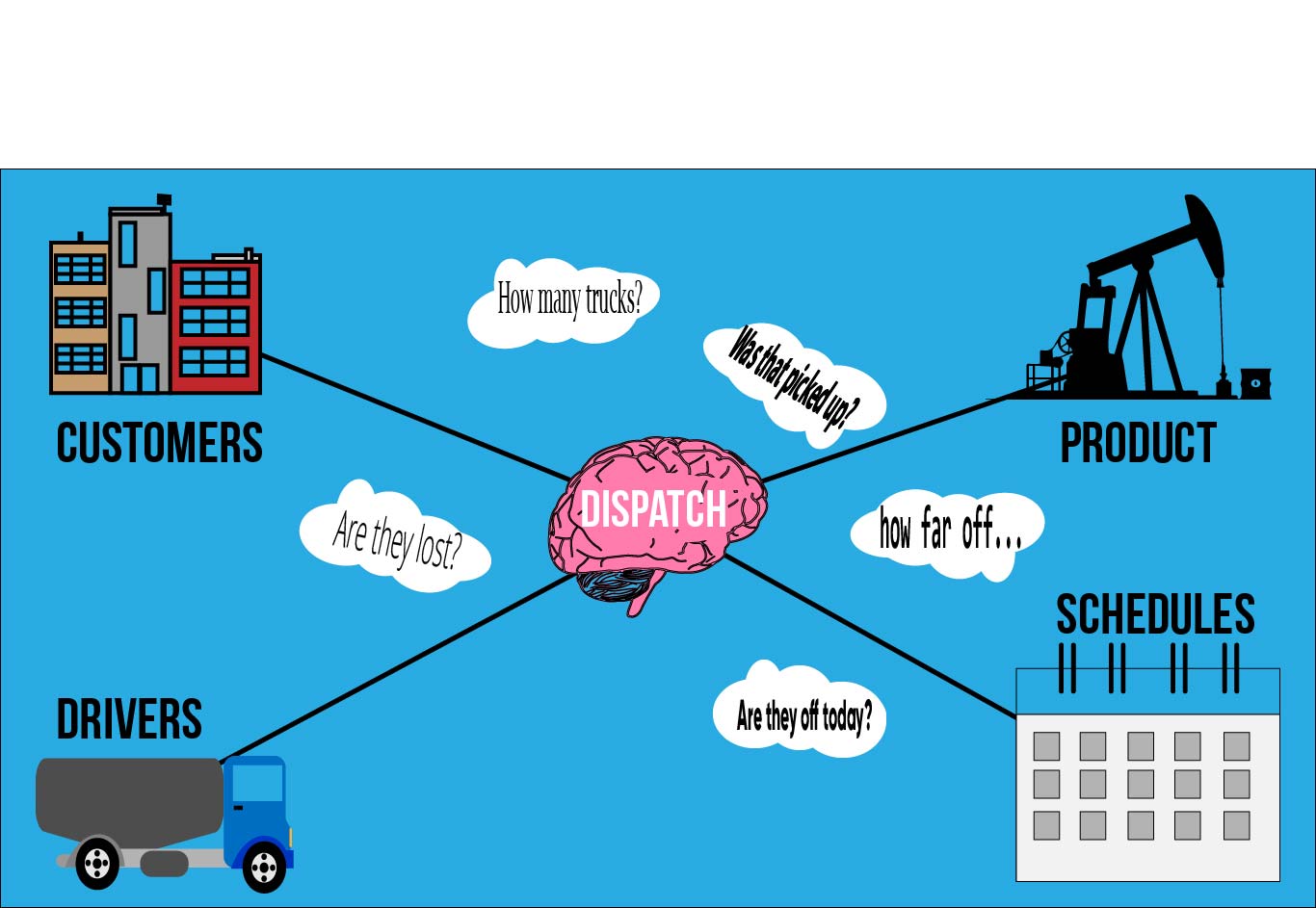
Using Dispatch Commodity as a Dispatcher
When I first started out in crude oil dispatch for my company, we were using carbon copy paper tickets. We went through a local Colorado print shop for the paper tickets. We changed the crude oil ticket template around four to five times before we settled on the best format for our operator and producer marketers. My day-to-day operations would center around chasing the drivers for their crude oil ticket copies for all my reports. I would then enter the data into a spreadsheet on my laptop and send an email to the customers. I spent at the minimum a tank and a half of gas driving around gathering the paper tickets. And at the time we were servicing near 70 trucks. This made it very difficult to meet our destination crude oil allocations due to the fact we were finding days old crude oil tickets in drivers’ trucks.
Nowadays, when we made the switch over to an electronic ticketing and trucking dispatch software, Dispatch Commodity, I can work and dispatch from home. I also have the flexibility to go into the shop or office with cloud access on my laptop. The electronic dispatching and ticketing software allowed for the electronic Bills of Lading (eBOLs) to be sent with my daily reports in an automated email subscription.
Dispatch Commodity cut out most of the difficulties I was experiencing. The drivers are the hardest to work with because of the human element. They have real world problems. Then their problems boil over to their work, and they become your problems. Weather factors, health factors, equipment issues, slow work, financial instability, whatever the case, life struggles can weigh on the drivers. Helping them cope with the cards they’ve been dealt is another cap I wear. It can be a real challenge for the team when there’s freezing cold weather in Colorado. Ever since the decline in the workforce due to the pandemic, crude oil lease managers and operators went from having four to five leases to manage, to 10 plus. The operators simply do not have enough time to spend on each location and work the oil like they could two years ago. If you tracked the quality of the crude oil hauled two years ago to today, you would see a decrease in the condition. Lately, there have been more water issues with the freezing temperatures due to the lines freezing up. Drivers have had longer wait times and more rejected leases.
Since we work with the buyers, marketers, and customers who purchase the crude oil, we know our month’s activity in advance. There is usually a steady stream of crude oil to be hauled. If the customer needs to make any changes, they know within two weeks of the upcoming change. The customer provides the delivery location, I coordinate with the producer when the load is available, and then I connect with the onsite operator to schedule the pickup. A lot of my job deals with the contacts in the field. I would say all the rapport I have with the field team members makes my job easier. It’s easy to get caught up in conversation with each other about the local sports team or how the kids and family are doing.
When a load is sent to me, I receive it either in the form of a text message or an email. Uncommonly will I be contacted via a call on my cell phone for a load. I create the order within our electronic ticketing software, Dispatch Commodity. Then I use the features of the dispatch planner, driver map, and home grid to dispatch the crude oil loads to my drivers. Once the loads are delivered, I can quickly review the dispatch software feature of the allocation’s dashboard. These destination allocations are automatically updated based on the customer and the destination. The electronic ticketing data shows me which allocations are on track to being met with the number of crude oil barrels per day, and which that we need to catch up on deliveries. I can then adjust my truck dispatches accordingly and notify the customers of the changes. If the customer would like additional details, a customer portal can be accessed, and specific reporting views allowed for export for each user. The simplicity of the trucking management software is by far my favorite feature. I am not a technical savvy person, and neither is my colleague. If I can make my trucking operations more efficient within the features of the easy-to-use dispatch software, then any other trucking dispatch software user could benefit from it.
In my years of experience, I cannot imagine ever going back to paper tickets. The electronic ticketing and dispatching software and support provided by Dispatch Commodity makes my job easier. The 24/7 support team always answer the phone. Any issue I’ve had with a ticket or didn’t fully understand a feature, I contacted support. They guide me through and answer all my questions with accuracy and urgency.
Want to learn more about central dispatching vs driver self dispatching?
